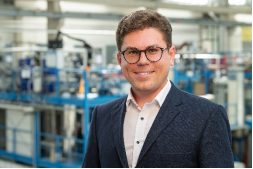

Liquid Metal Dealloying: From Fundamentals to Applications
Time:2021-11-10 Visits:
 会议时间:11月15日(周一)下午4:00-5:00
会议时间:11月15日(周一)下午4:00-5:00
主讲人:Prof. Ilya Vladimirovich Okulov
报告题目:Liquid Metal Dealloying: From Fundamentals to Applications
会议软件:Microsoft Teams
参会链接:https://teams.live.com/meet/95689016984654
报告摘要:
Liquid Metal Dealloying: From Fundamentals to Applications
Assoc. Prof. Dr.-Ing. Ilya Vladimirovich Okulov
Institute for Materials Research, Tohoku University, Japan (visiting Associated Professor)
Leibniz Institute for Materials Engineering - IWT, Germany
Institute of Natural Sciences and Mathematics, Ural Federal University, 620000 Ekaterinburg, Russia
Faculty of Production Engineering, University of Bremen, Germany
In this lecture, we will talk about one of the most fascinating synthesis methods for assembling several quintillions of nanoscale objects into a macroscopic body (1018 for 1 cm3 of material with a 10 nm structure size) in a very efficient way. This method is dealloying. There are four main types of dealloying methods, namely, electrochemical [1], liquid metal [2–4], solid-state [5], and vapor phase dealloying [6]. These dealloying methods are complementary to each other and enable researchers to design porous materials of nearly any chemical composition from reactive materials such as magnesium [7] to noble ones such as gold [1] and modern one such as high-entropy alloys [4].
Among all these dealloying methods, we will particularly focus on liquid metal dealloying invented by Prof. Hidemi Kato and co-workers at the Institute for Materials Research, Tohoku University about a decade ago [2]. Liquid metal dealloying is always compared with electrochemical dealloying, but unlike the latter one, this utilizes the difference in enthalpies of mixing between each element of the precursor alloy with the metallic melt and is several orders of magnitude faster. The metallic melt may consist of one or more elements and acts as corrosive medium. The sacrificial element dissolves out from the precursor alloy when this is immersed in the metallic melt due to a positive enthalpy of mixing between the elements. We will talk about the selection of suitable combinations of metallic melts and precursor alloys for liquid metal dealloying as well as touch on the topic of dealloying kinetics.
Since the discovery of liquid metal dealloying, many new functional porous materials have been synthesized by this method, including nanoporous high-entropy alloys, steels, niobium, magnesium, silicon, titanium to list a few. Liquid metal dealloyed porous metals and composites combine moderate strength with low elastic modulus suggesting their application in biomedical implant devices for bone fixation. Moreover, the outstanding functional properties of these materials due to the high surface area envision many opportunities for their application in capacitors, batteries, and catalysis. Finally, we will discuss the opportunities for integrating dealloying methods into advanced manufacturing technologies such as additive manufacturing.
[1] J. Erlebacher, M.J. Aziz, A. Karma, N. Dimitrov, K. Sieradzki, Nature 410 (2001) 450–453.
[2] T. Wada, K. Yubuta, A. Inoue, H. Kato, Mater. Lett. 65 (2011) 1076–1078.
[3] P. Geslin, I. Mccue, J. Erlebacher, A. Karma, Nat. Commun. 6 (2015) 1–19.
[4] S.-H. Joo, J.W. Bae, W.-Y. Park, Y. Shimada, T. Wada, H.S. Kim, A. Takeuchi, T.J. Konno, H. Kato, I. V. Okulov, Adv. Mater. 32 (2020) 1906160.
[5] T. Wada, K. Yubuta, H. Kato, Scr. Mater. 118 (2016) 33–36.
[6] Z. Lu, C. Li, J. Han, F. Zhang, P. Liu, H. Wang, Z. Wang, C. Cheng, L. Chen, A. Hirata, T. Fujita, J. Erlebacher, M. Chen, Nat. Commun. 9 (2018) 276.
[7] I.V. Okulov, S. V Lamaka, T. Wada, K. Yubuta, M.L. Zheludkevich, J. Weissmüller, J. Markmann, H. Kato, Nano Res. 11 (2018) 6428–6435.